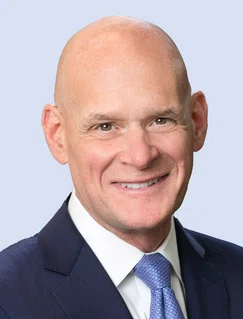Published in London & New York
10 Queen Street Place, London
1345 Avenue of the Americas, New York
Creditflux is an
company
© Creditflux Ltd 2025. All rights reserved. Available by subscription only.


Opinion Direct lending

Fears about rates and the economy have dwindled and the outlook is positive
by Randy Schwimmer

Randy Schwimmer
Vice chairman
Churchill Asset Management
Bond yields are rising but capital markets remain full speed ahead
A year ago we identified four issues that would lay the foundations for a Goldilocks era in private debt and private equity. They were:
- How a recalibrating market would accommodate higher rates.
- Why dispersion among managers looked likely to increase.
- Why portfolio diversification leads to better performance.
- How private capital managers needed more sophisticated financing tools to generate strong risk-adjusted returns for investors.
Market worries have also faded. Would M&A flow pick up with the prospect of lower interest rates? Yes, 3Q was the turning point. BofA now predicts 23% more event-driven activity for 2025. Heightened private credit risk? Didn’t happen. Direct lending defaults were 1.5%, according to KBRA — half of what was projected.
Did heightened competition between banks and private credit weaken terms? Not in the middle market. All-in spreads compressed, but more at the upper end of the market, and from record high levels two years ago. Despite warnings that banks would erode private credit market share, leading direct lenders reported 20% or better year-over-year volume increases. Meanwhile, the leveraged loan market hit a record USD 1.6tn, proving public and private credit markets can flourish independently.
Nevertheless, sponsored buyouts are almost exclusively the purview of direct lenders, while banks target larger corporate deals. Of the USD 1.6tn BSL volume, only 5% — about USD 84bn — went to new LBOs, according to LSEG LPC. PitchBook LCD reported 2024 new issue leveraged loan volume (ex-repricings) of USD 500bn, a level not seen since the market top three years ago. Buyout and corporate M&A financings totalled USD 133bn, or 26% of activity — the second lowest in over a decade.
For 2025, we’ve come up with five new private market trends:
- Higher-for-longer remains good for private capital investors.
- The best managers can source and secure better opportunities as M&A picks up.
- Loan defaults will remain in check even with rates higher than normal.
- Even in a ‘crowded’ private credit market, highly selective LPs can find great managers.
- Exits, fundraising and new deals will accelerate.
Sponsors need dependable partners
All of this is to suggest a reorientation of our thinking about supply and demand in the loan market. Capital formation is now more associated with process and predictability. Sponsors seek speed and certainty of execution. They align financing partners with specific borrower needs for growth and acquisition capacity, expanding lender groups as required over time to meet those needs.
We’ve said before that capital tends to fill a vacuum. Demand in the world of private credit is not a capped resource. Deployment gets triggered by the supply of new deals and vice-versa. With continuing appetite for the asset class, growing M&A flow will be met with direct lenders offering constructive terms.
However, while we expect M&A deal flow to continue to improve, as global 3Q 2024 numbers highlighted, Lincoln International raised a cautionary note. In a report it noted that: “Surveyed groups [said] that anecdotal close rates for 2024 deal launches were the lowest many could recall, with the most optimistic estimate being that only 50% of deals launched in 2024 have closed or are on track to close and the most pessimistic estimate at a paltry 30%.”




